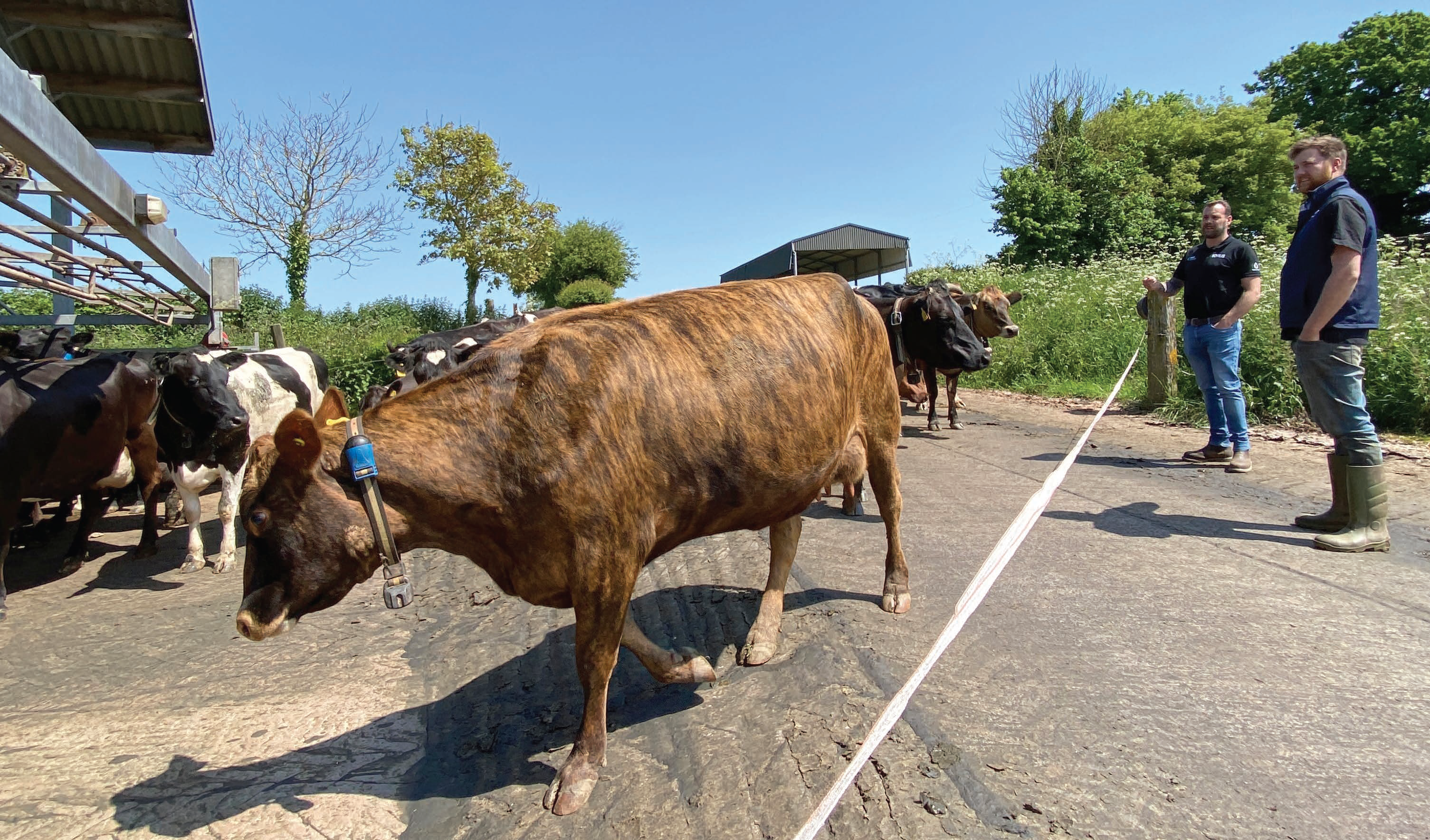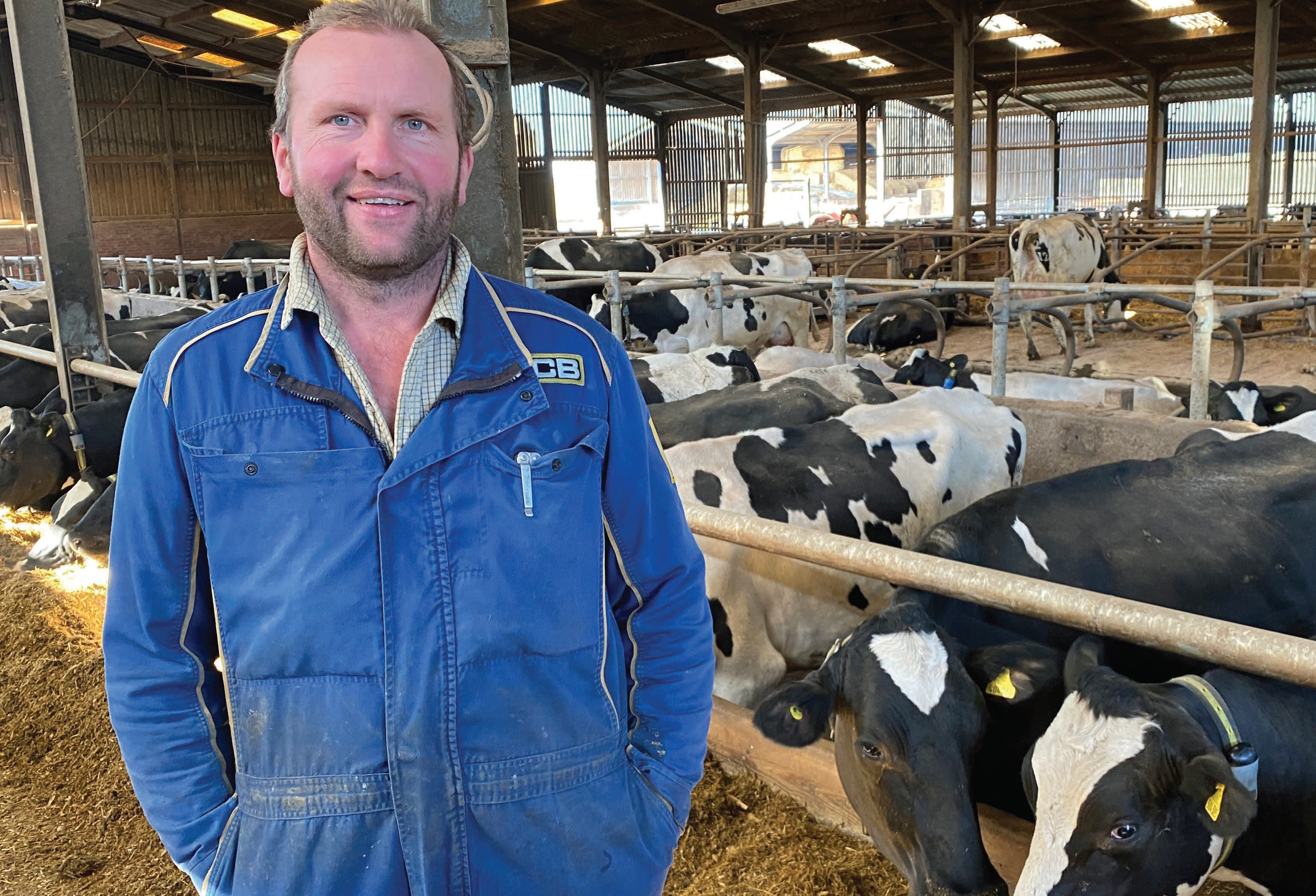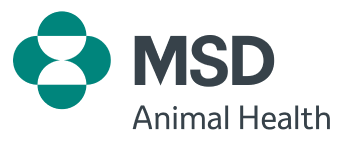In this exclusive content, MSD Animal Health’s milking technology lead, Daniel Price, discusses how measuring milk quality at each milking can reduce the cost and production losses associated with poor health in the dairy herd.
Why is it important to monitor milk quality?
The quality of milk produced by each animal is dependent on the animal’s breed, age and stage of lactation, and on the quality and quantity of the animal’s diet and health status. Measuring milk quality at each milking therefore enables herd managers to have a better appreciation of the herd’s wellbeing, and to understand how effectively the herd is being managed from a nutritional perspective.
Milk monitoring also enables herd managers to accurately and quickly pinpoint cows with an emerging health issue such as mastitis or acidosis so that they can be treated sooner. This reduces treatment costs and antibiotic usage and safeguards the value of the milk in the bulk tank and the long-term health and potential of the animal.
What was once reliant on the expert eye of experienced staff and monthly milk recording can now be achieved at each milking using in-parlour technology.
Counting the cost of mastitis
- Mastitis is one of the major health problems affecting UK dairy herds.
- Mastitis costs an average of £250-£300 per case in veterinary costs and lost milk.
- For a 200-cow herd, with an average mastitis rate of 32 cases/100 cows/year and a bulk milk SCC of 162,000, this equates to a cost of £15,594 per year.
- In a similar herd with subclinical mastitis and a bulk milk SCC of 250,000 this figure rises to £25,029 due to additional losses incurred through SCC penalties.
AHDB & LLM Farm Vets, 2021
What is the SenseHub Ecosystem and what can it measure?
In addition to detecting heats and monitoring cow health, the SenseHub® Ecosystem also includes two key pieces of equipment which analyse milk quality during milking. Both items are compatible with any type or make of parlour:
SenseHub Dairy In-Line MilkPlus Sensor
Measures yield, butterfat, protein and lactose content. Also detects the presence of blood and measures milk conductivity.
SenseHub Dairy In-Line Somatic Cell Count Sensor
Measures the somatic cell count (SCC) of each cow as she is being milked.
Maximising the value of milk
- Milk with a low butterfat or protein content costs UK dairy farmers £55 million per year… equivalent to 0.44ppl.
- Falling protein highlights a lack of high-quality forage.
- Falling lactose indicates a lack of energy in the diet.
- Rising lactose in conjunction with a rise in SCC can be indicative of subclinical mastitis.
- Blood in the milk is a clear indication of poor udder health or injury.
- High milk conductivity is indicative of an udder health issue such as infection, injury or a stress-induced condition.
How does the SenseHub In-Line MilkPlus Sensor work?
Located at each milking point, the In-Line MilkPlus Sensor works in much the same way as a regular flow meter: with no moving parts, and a wide internal diameter which doesn’t compromise milk flow, this small black box is installed between the milking cluster and milk transfer line. Two ring sensors measure milk flow rate and yield, while an optical light assesses fat, protein and lactose content and detects the presence of blood. Two additional probes measure conductivity.
The data collected by the MilkPlus sensor is displayed in the SenseHub app as easy-to-understand charts and graphs which can be viewed remotely from anywhere with an internet connection.
How does the SenseHub In-Line Somatic Cell Count Sensor work?
The In-Line Somatic Cell Count Sensor is also located at each milking point and is housed within a small stainless-steel cabinet located between the milking cluster and milk transfer line. The sensor takes a 1ml sample of milk as soon as milking commences and adds 7ml of a reagent to carry out a California Milk Test which it completes with two minutes.
The test results are displayed via the SenseHub app which can be programmed to send an alert should an elevated cell count be detected.
An Optical Warning Light (OWL) can also be installed at each milking point to provide an immediate visual alert of any problem animals: green, amber and red lights indicate the measured cell count value so that the necessary action (e.g. dumping milk with a high SCC) can be taken quickly and the cow segregated for inspection and/or treatment.
How can monitoring milk quality help to improve the herd’s health and performance?
Measuring milk quality at each milking enables herd managers to quickly and reliably identify any issues which may affect the financial value of the milk being sold. It also enables any new health issues such as mastitis and acidosis to be identified earlier so that the affected animal(s) can be treated sooner.
This reduces medical costs and antibiotic usage and allows the animal(s) to return to full health sooner: existing users report that milk from cows with udder health problems typically goes back into the bulk tank up to three days earlier.
The ability to measure yield, butterfat and protein at each milking also allows herd managers to evaluate the herd’s diet and to respond faster to problems as they occur. For example, if a fall in milk quality coincides with a change of feed or switching from one silage clamp to another, this is a clear indication of a dietary imbalance.
Measuring SCC at each milking also makes selective dry cow therapy more accurate, with herd managers also able to interrogate milk production records to identify which cows are consistently producing the highest quality milk so that they can be prioritised for the breeding of replacement heifers.
Key benefits of milk monitoring
- Early warning of conditions such as mastitis and acidosis
- Earlier treatment and reduction of antibiotic usage
- Reduced milk wastage and lower medical bills
- Higher milk revenue
- Improved herd management and better breeding decisions
Find out more
To find out how more about any of the equipment mentioned above, please call the SenseHub team on 01207 265840 or email us at sensehubGB@msd.com.
SenseHub is not intended to diagnose, treat, cure, or prevent any disease in animals. For the diagnosis, treatment, cure, or prevention of disease in animals, you should consult your veterinarian. The accuracy of the data collected and presented through this product is not intended to match that of medical devices or scientific measurement devices.

The SenseHubTM Dairy In-Line MilkPlus (left) and SenseHubTM Dairy In-Line SCC (right) sensors provide up-to-date milk quality data for each milking point.

The in-parlour Optical Warning Light (OWL) uses green, amber and red lights to provide an immediate visual indication of the measured cell count value.





 Argentina
Argentina Belgium (Dutch)
Belgium (Dutch) Brazil
Brazil Chile
Chile Colombia
Colombia Czech Republic
Czech Republic Finland
Finland France
France Germany
Germany Ireland
Ireland Italy
Italy Mexico
Mexico New Zealand
New Zealand Norway
Norway Panama
Panama Portugal
Portugal Spain
Spain Sweden
Sweden United Kingdom
United Kingdom Global
Global